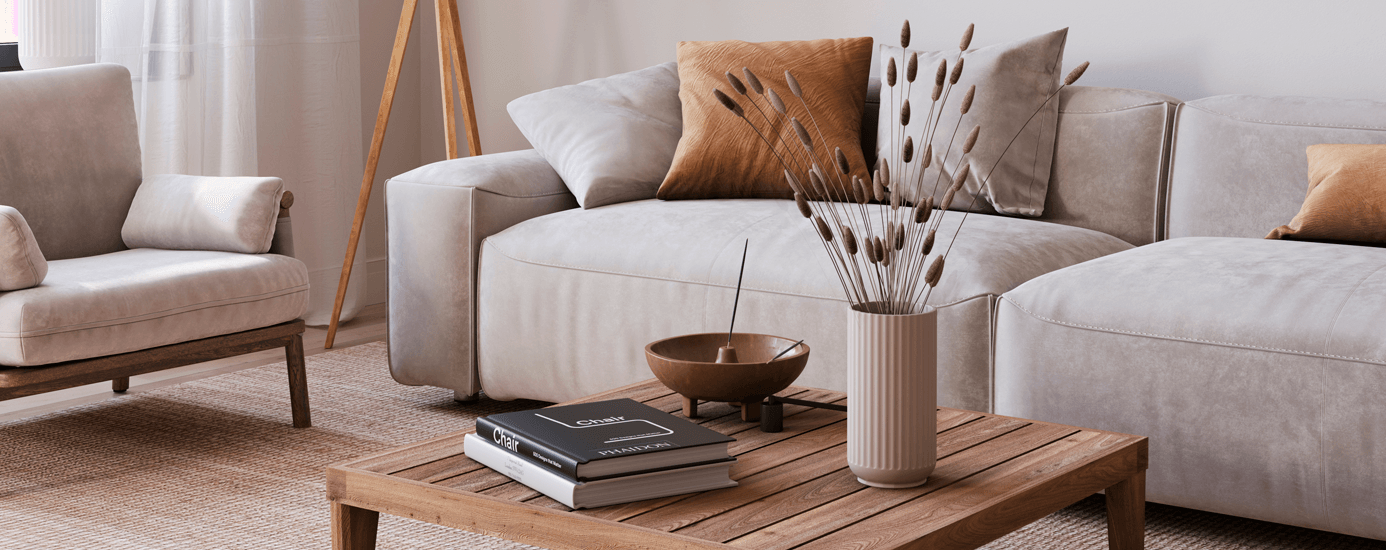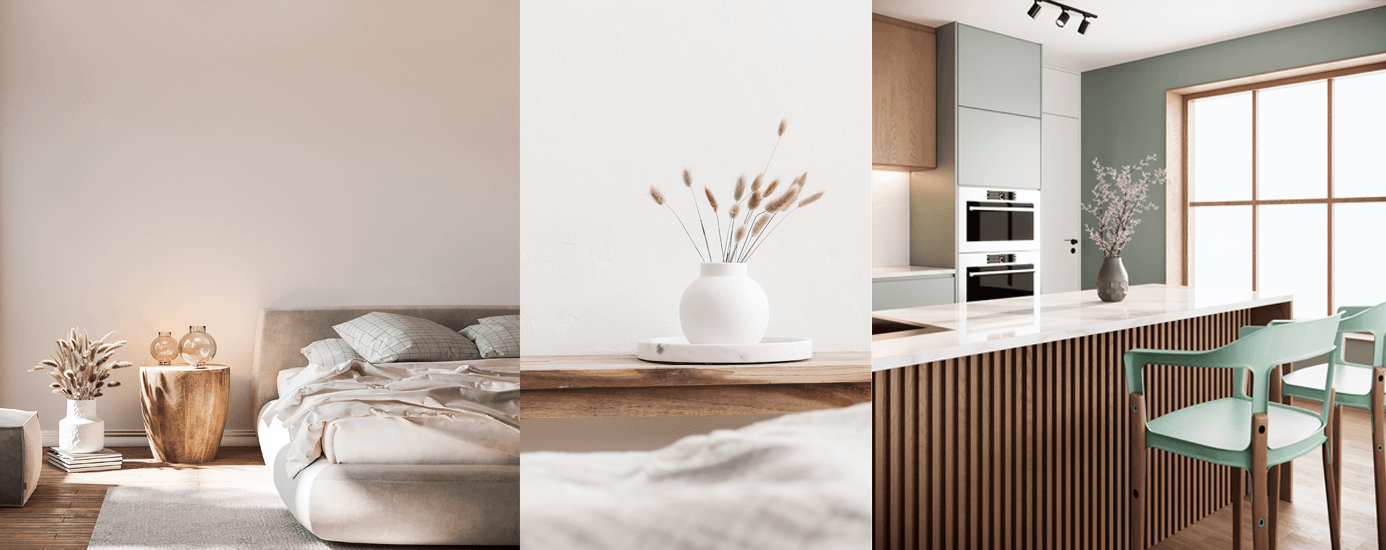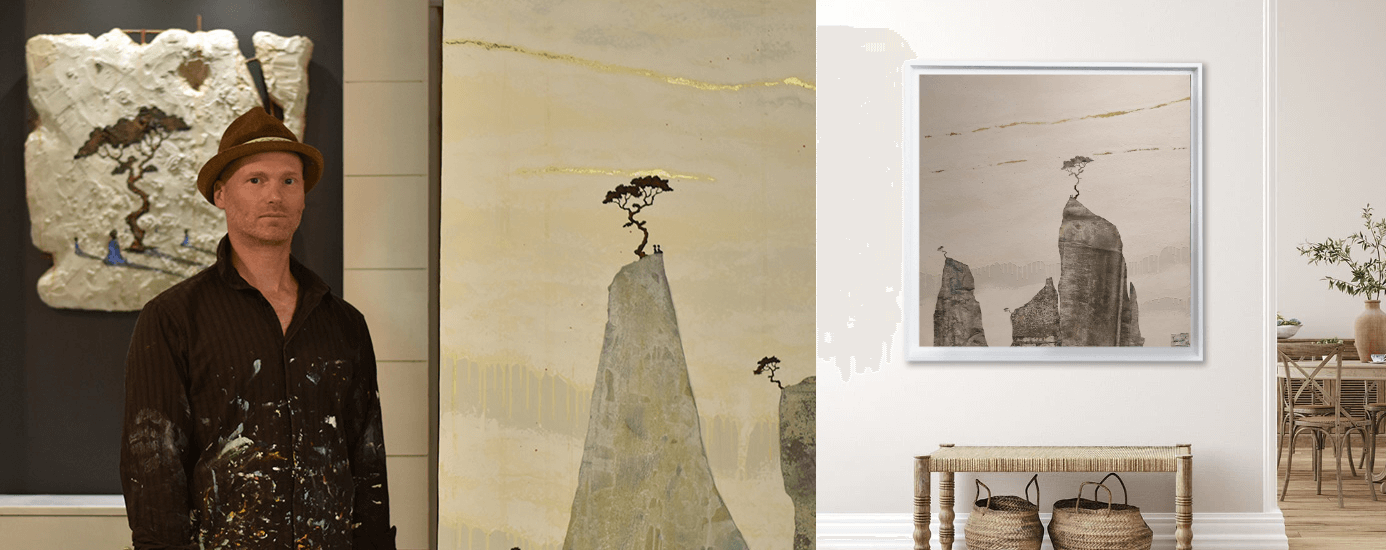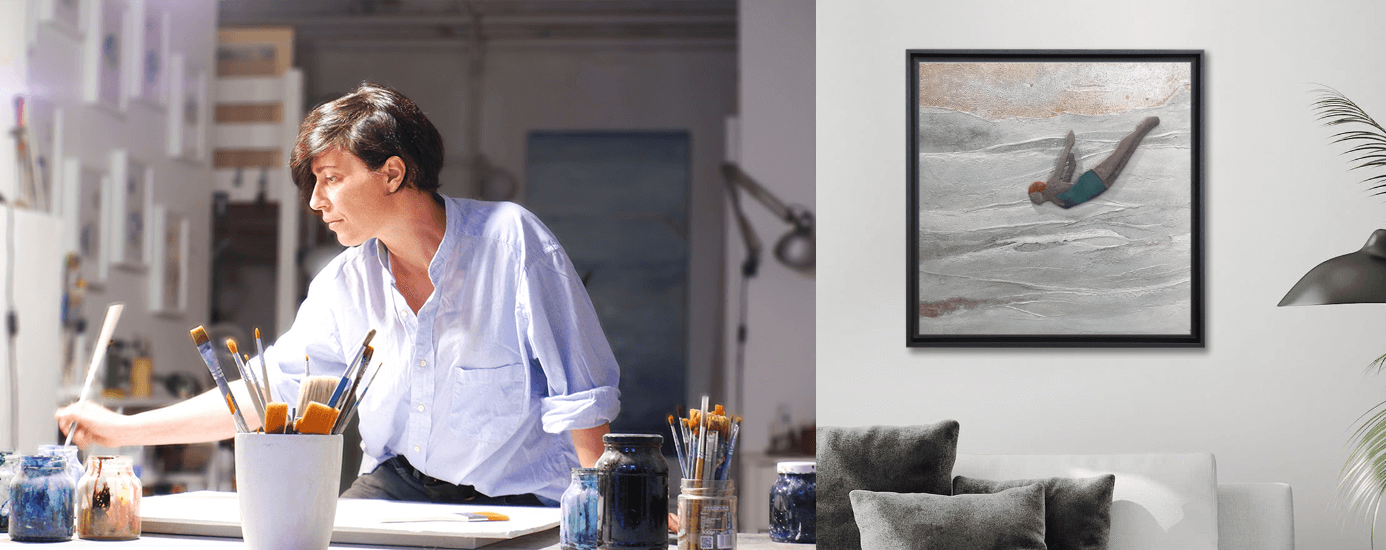Decoration
Choose your artwork for a Japandi interior
- 13/06/2022
When I found out that Carré d'artistes was going to pay a tribute to Japan this May, I immediately wanted to talk about the Japandi style.
What is Japandi? Etymologically speaking, it is the contraction of Japan and Scandinavia. In terms of space design, the aesthetics and authenticity of the Japanese style combines with the warm and functional side of the Scandinavian style.
The Japandi style is the blended version of these two universes which have a common goal: an appeal for serenity. This translates into clean and minimalist lines, the use of wood and natural materials, along with soft and neutral colors... The goal of the Japandi style is to create a peaceful, harmonious, and warm interior.
I personally like this style, it triggers a feeling of peace and calm when I come back from a rather intense day, filled with emotions!
What is Japandi? Etymologically speaking, it is the contraction of Japan and Scandinavia. In terms of space design, the aesthetics and authenticity of the Japanese style combines with the warm and functional side of the Scandinavian style.
The Japandi style is the blended version of these two universes which have a common goal: an appeal for serenity. This translates into clean and minimalist lines, the use of wood and natural materials, along with soft and neutral colors... The goal of the Japandi style is to create a peaceful, harmonious, and warm interior.
I personally like this style, it triggers a feeling of peace and calm when I come back from a rather intense day, filled with emotions!
THE JAPANDI DECORATION CODES
The secret is to avoid overloading your interior. Whether in terms of colors that are used, substances and materials, furniture, decorations and even plants, the basic principle is “less is more”. (Ludwig Mies van der Rohe, American architect)
Modern Japanese style
When we think about the traditional Japanese habitat, we think of tatamis (woven rice straw mats), straight lines and bare walls, and the significant presence of wood.
The modern Japanese style is inspired by traditional housing, but in a warmer atmosphere. The entrance of natural light then becomes essential, the color palettes are more neutral. We possess lower cabinets and slender furniture to raise the eye and look at high volumes, and thus create a feeling of space. By keeping a relatively limited variation in terms of materials and colors, the space gains in simplicity and coherence. The atmosphere is more peaceful, much more zen.
We also apply the “Wabi-Sabi” philosophy, which is to find beauty in imperfection. In decoration, this translates into highlighting the irregularity of materials and shapes, such as a table-top cut from a tree trunk, where we would see impacts or traces of past life.
Modern Japanese style
When we think about the traditional Japanese habitat, we think of tatamis (woven rice straw mats), straight lines and bare walls, and the significant presence of wood.
The modern Japanese style is inspired by traditional housing, but in a warmer atmosphere. The entrance of natural light then becomes essential, the color palettes are more neutral. We possess lower cabinets and slender furniture to raise the eye and look at high volumes, and thus create a feeling of space. By keeping a relatively limited variation in terms of materials and colors, the space gains in simplicity and coherence. The atmosphere is more peaceful, much more zen.
We also apply the “Wabi-Sabi” philosophy, which is to find beauty in imperfection. In decoration, this translates into highlighting the irregularity of materials and shapes, such as a table-top cut from a tree trunk, where we would see impacts or traces of past life.

Scandinavian style
Like any Japanese interior design, the Scandinavian style has put down roots in minimalism and clean lines. Scandinavian countries add a special touch, the “Hygge” concept, which they use in their interior but also to describe a moment or a feeling that is comfortable, friendly, warm.
To bring warmth and a relaxed style, we use soft materials and round shapes. We add a few elements that show traces of life, such as books/ cups/ candlesticks, which avoid the sterile side, but always without looking cluttered or disorganized. In terms of colors, we often find white, black and a wide range of grays.
Like any Japanese interior design, the Scandinavian style has put down roots in minimalism and clean lines. Scandinavian countries add a special touch, the “Hygge” concept, which they use in their interior but also to describe a moment or a feeling that is comfortable, friendly, warm.
To bring warmth and a relaxed style, we use soft materials and round shapes. We add a few elements that show traces of life, such as books/ cups/ candlesticks, which avoid the sterile side, but always without looking cluttered or disorganized. In terms of colors, we often find white, black and a wide range of grays.
ARTWORK FOR A JAPANDI INTERIOR
Why?
● Use of soft tones, black and white
● Minimalist, Japanese lines
● Themes related to nature

● Use of soft tones, black and white
● Minimalist, Japanese lines
● Themes related to nature

Recommended artist: Gaia Roma (IT)
Why?
● Use of natural colors
● Abstract and poetic lines
● Notions of landscapes

TO TAKE THINGS UP A NOTCH
● Light or blond wood, a few touches of darker wood (walnut, etc.)
● Clay, glass, concrete
● Textiles: Linen, cotton, and textured textiles
Colors
● Earthy shades
● Tones of warm white, beige, ivory,
● Touches of black, a color present in the Scandinavian but also Japanese style.
● Avoid bright colors and loaded patterns
● Favor matte finishes to lacquered finishes
Decoration
● Wooden cleats in wall panel or semi-open partition
● Remove all superfluous decoration, follow the feng-shui philosophy/less is more
● Avoid visual cluttering caused by the accumulation of mail, magazines, cables, etc.
● Favor crafts and handmade objects, which have character/ a genuine soul
Plants
● Favor a single special plant (yucca, maple/bonsai) instead of a “jungle” effect
● Large dried wild herbs or branches (cherry tree, willow tree), elegantly arranged in stoneware or ceramic vases
Light
● Small touches of black
● Suspensions, lantern, tealight in paper or cane/rattan
Laureen-Lee Morisset
Interior designer and consultant in furnishing solutions















